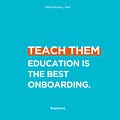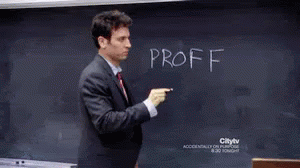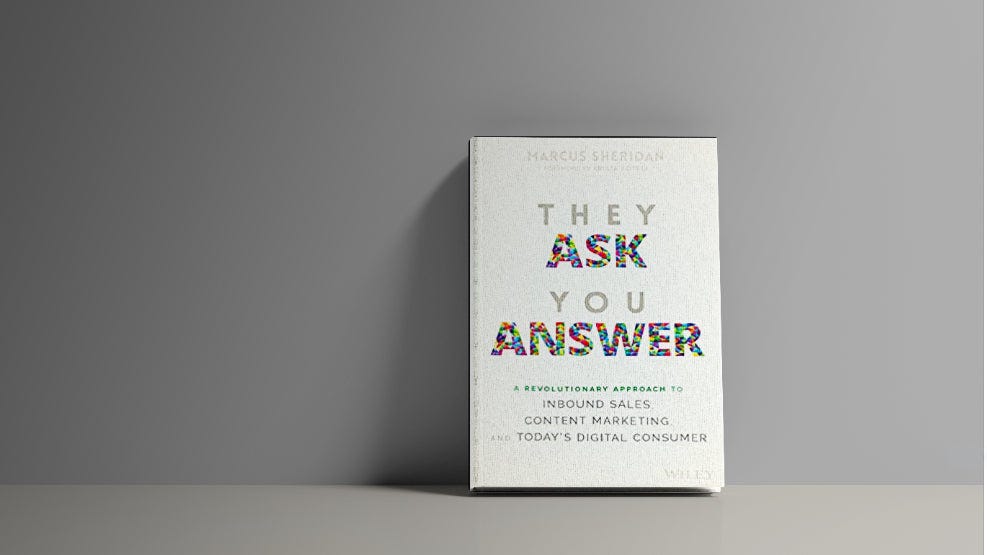Why teaching university students is exactly the same as facilitating a $10.000 workshop.
Teaching is onboarding. Teaching is permission marketing. Teaching is selling. What are you waiting for?
TL,DR:
I started teaching class again yesterday and it got me thinking about pitching, message building, and selling.
Teaching is selling (but what makes a good
sellerteacher?)There's a way to turn teaching into permission marketing.
It's time to leverage education as a way to communicate. Keep reading and sign-up 👇 for insights on how to do that!
Those of you who know me personally know that I've been teaching for a while. And that I love doing that exercise.
I teach students. I teach entrepreneurs. I teach clients. I give lectures. I facilitate workshops. And the goal is always the same: make sure people think differently and leave our discussions with conclusions they can use to keep moving on.
Why am I writing this? Two reasons.
One, teaching, explaining, and pushing people to process information and do something with it is the best way I've found to make them come up with decisions.
Convincing doesn't work. Making people come up with their own conclusion(s) does.
Two, I wish more people used that approach to educate, instead of simply trying to sell stuff, with no positive-sum result. The impact is SOOO much bigger if you think about it!
Good teacher, good pitcher.
Here's the thing though. There are good teachers and bad teachers.
We've all been to classes where the only goal people had in common was to be done with it and leave. Teacher included.
Seriously! I've stopped counting how many times my former professor colleagues complained about going to class!
But hey, how can we expect students to do anything with what we teach them if we don't actually intend to teach them?
So, what makes the difference between good teaching and bad teaching, then?
Good question, thanks for asking.
Easy answer: what makes the difference between good teaching and bad teaching is onboarding, and your ability to sell a topic that doesn't sound exciting.
Which comes down to only one thing: intention.
Intention is where the message comes from.
Intention is where the passion comes from.
Intention is how the mood gets transmitted.
Intention is where students find the motivation to listen, and the inspiration to turn what they hear into something. Not because you ask, but because they want to.
Intention is what makes the pitch good, and it's what makes the sale. No intention, no pitch, no attention, no selling.
Teaching university students is exactly the same as facilitating a $10.000 workshop.
The fun thing with this, really, is that when you see teaching as a fun, positive-sum game, then working with a class of sixty to a hundred students is exactly the same as facilitating a $10.000 dollars workshop.
When you put the right intention and motivation into your performance, people respond accordingly, and students become the same as workshop participants.
They become curious, they smile and dare to give their opinion. Their body language suggests that they want more. They expect you to keep going.
And if you provoke them just a tiny bit, they'll come up with conclusions they never thought they'd formulate.
Even better? You'll see on their face that something light-bulb related just happened, even if they haven't figured it out just yet. But you know they'll come back.
Some will even add that they've never seen anything like that before. And that's where you know you've done your job the best you could.
Good teaching makes the sale. That's the power of permission marketing, my friends.
One easy way to turn teaching into permission marketing.
That's it. I said it.
Good teaching creates permission marketing, i.e. a relationship that pushes people to ask you to give them more of what you're talking about.
That gives you a very different way to talk to people - education vs hard sales!
In theory, university classes give me a way to talk about tech, finance and international governance (call it Regtech). But am I a regtech guy?
No, I'm not.
And it doesn't matter, because at the end of the day, the purpose of this class isn't to teach students Regtech. Most of them never heard of regtech before!
It's to provoke them and push them to think about how to become actors of the topic they're studying.
It's to teach them ways to leverage their engineering training in ways they've never considered before.
It's to teach them how to leverage big picture thinking to connect the dots, explain, pitch, and sell.
Sell ideas.
Sell concepts.
Sell issues, and solutions to those issues.
Sell technologies.
Sell business models.
Sell products.
Sell services.
Sell startups.
Sell skills, too.
The goal is to boost their ability to turn a spaghetti noodle bowl they weren't aware of an hour ago into something big, with ramifications and perspectives worth exploring by those who listen and have the power to make decisions.
The goal is to teach them how to convince by getting people on board.
Teaching and educating are all about permission marketing and onboarding.
And it's up to you to make the most of it!
Some further reading, just in case.
In case the topic is relevant, 'They Ask, You Answer' is a book worth reading. It promotes teaching as a way to boost your marketing strategy, and I highly recommend it.
Another book worth reading if you’re interested in #permissionmarketing is “This is Marketing” by Seth Godin.
Takeaways!
Teaching is onboarding, teaching is permission marketing, and teaching is selling.
Adding an educational approach to your pitch can give you a massive advantage. All it takes is a moment to wonder who you're talking to, and how you can turn your topic into a topic they'll buy.
Teaching university students is exactly the same as facilitating a $10.000 workshop. I do both, I promise.
How about you though? Are you selling, or educating? Get in touch and let's talk about it!
In the meantime, if you've found this post inspiring, how about sharing it to educate someone else? Share the fun, c'mon!
Until next time!
A.






